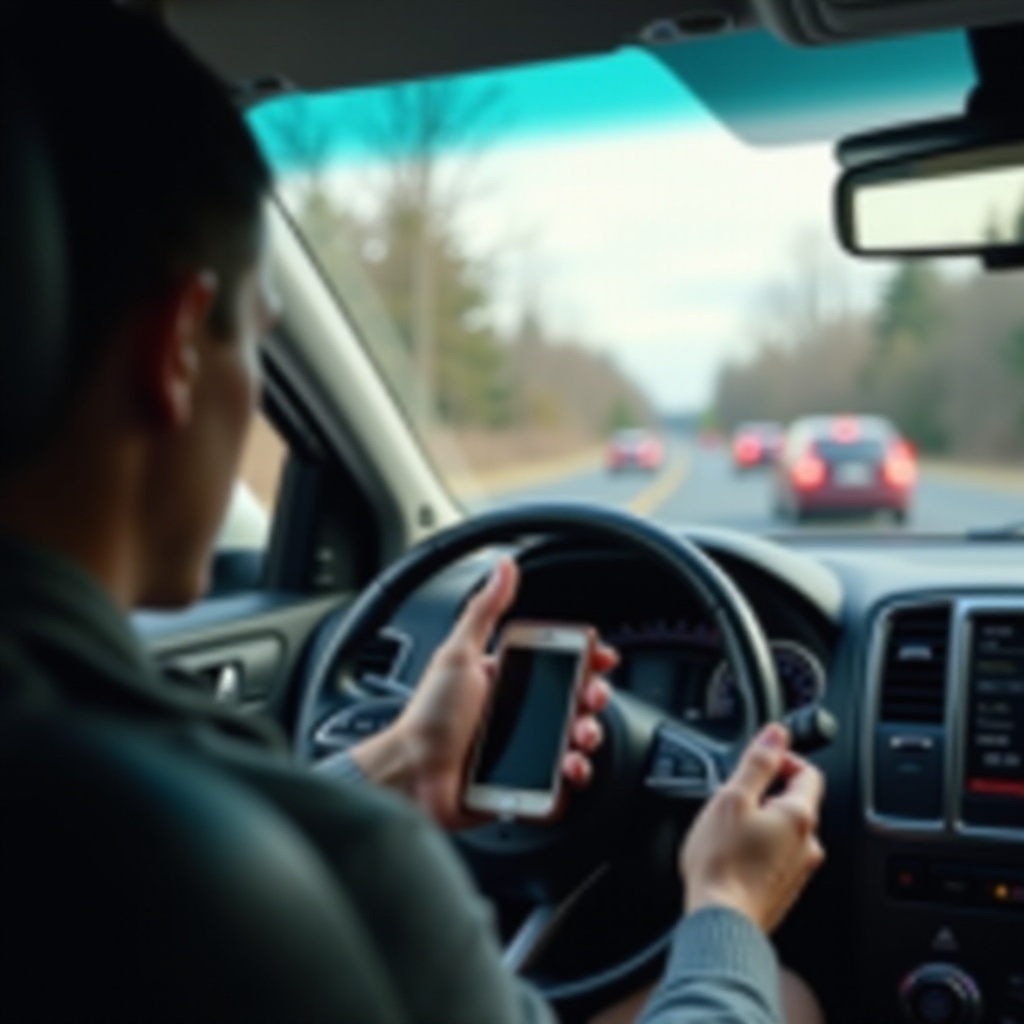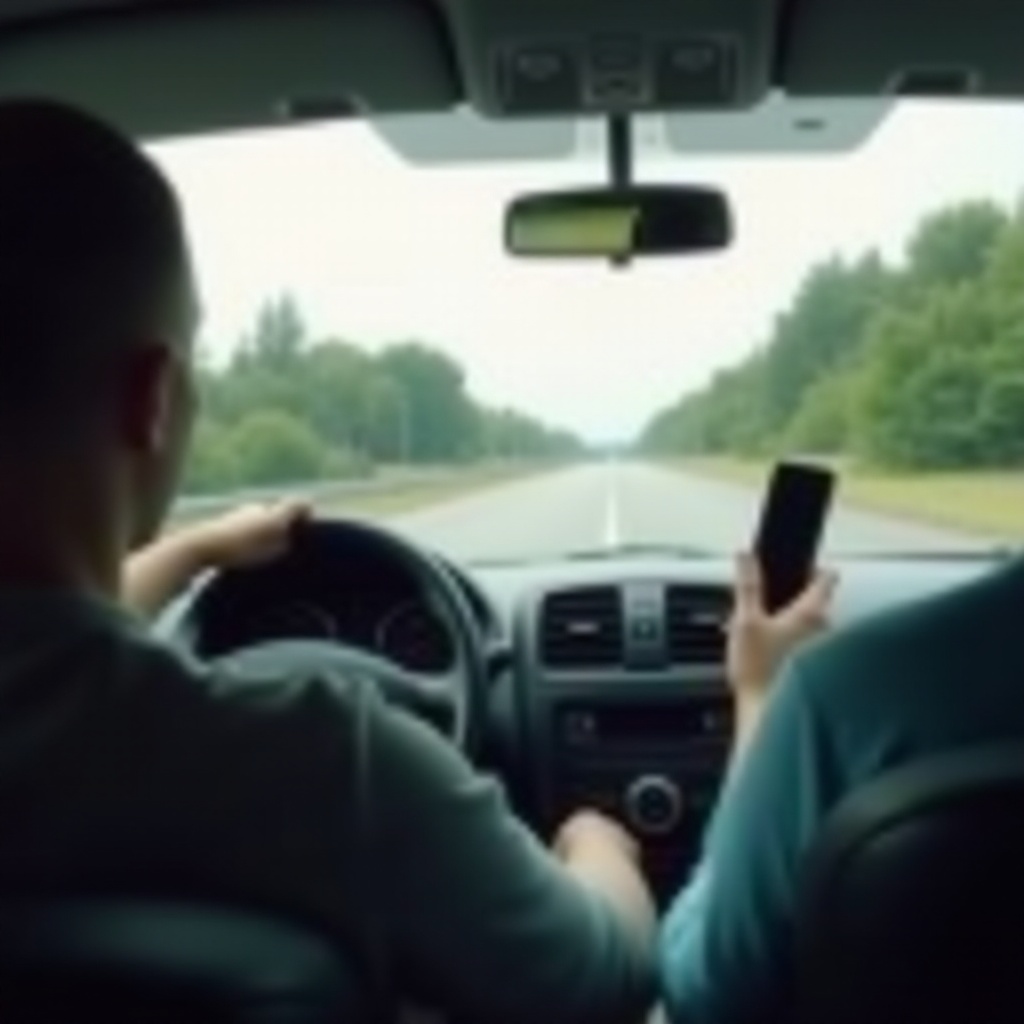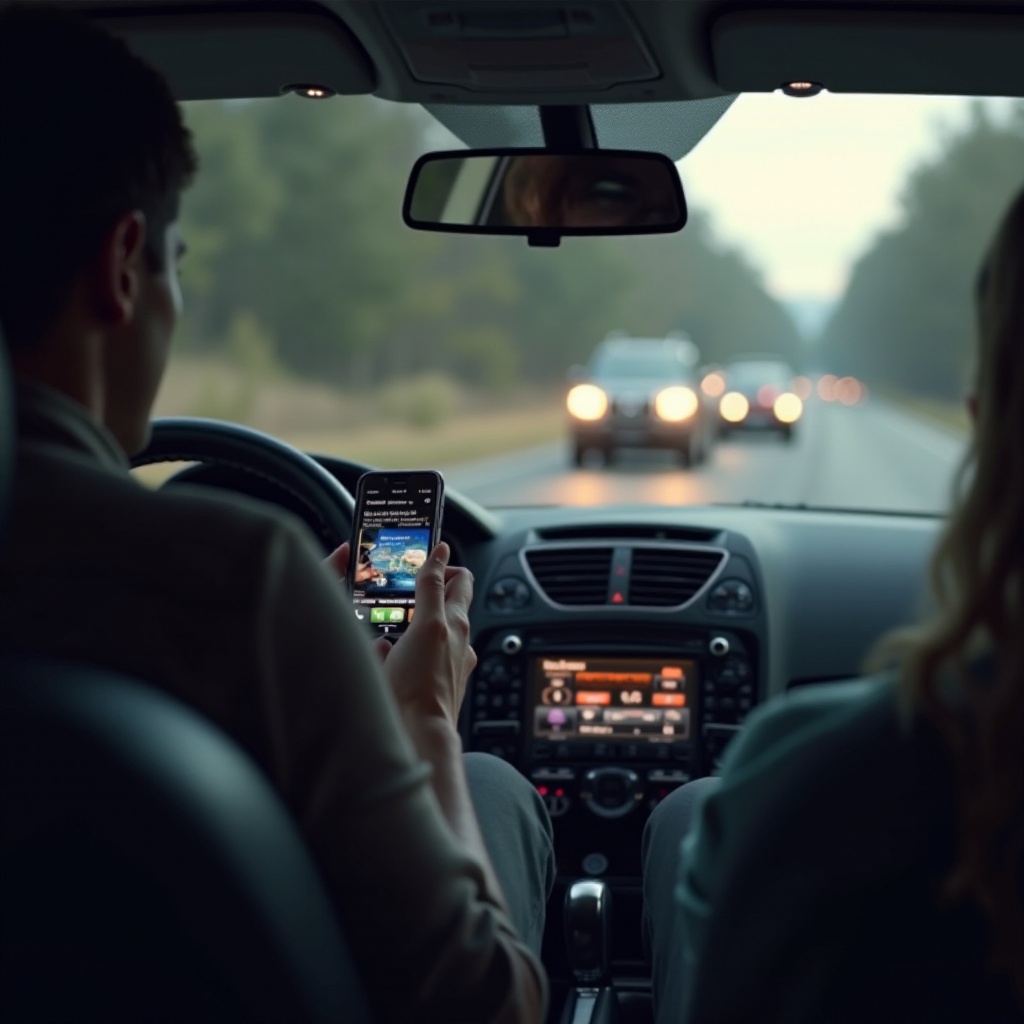Introduction
Holding a phone while driving significantly endangers both the driver and other road users. Whether it’s texting, checking social media, or making a call, the act takes the driver’s focus away from the primary task at hand. Distracted driving is one of the leading causes of accidents globally. This blog explores the growing trend of mobile phone-related accidents, reasons for distraction, and how these actions impair driving abilities.

The Rise of Mobile Phone-Related Accidents
The proliferation of smartphones has been a double-edged sword. While they offer connectivity and convenience, they’ve also led to a surge in distracted driving incidents. Research indicates a steady rise in the number of accidents where mobile phones are involved. In the past decade, the integration of sophisticated features in phones has made them more distracting. Drivers who split their attention between the road and their screens risk their lives and those of others.
Road safety organizations and law enforcement agencies are grappling with the increased incidence of such accidents. Public awareness campaigns have been launched to highlight the dangers of using a phone while driving. Despite these efforts, the statistics remain alarming, pointing to the need for more stringent measures and increased personal responsibility among drivers.
Why Holding a Phone Is Distracting
Holding a phone while driving divides attention, leading to three main types of distractions: visual, manual, and cognitive.
Visual Distractions
Visual distractions occur when the driver takes their eyes off the road to look at the phone. Even a few seconds of diverted gaze can be catastrophic. Reading a text message or scrolling through social media requires visual focus that should instead be dedicated to monitoring the road and its surroundings. The seconds lost in looking at a phone are precious and can be the difference between avoiding or causing an accident.
Manual Distractions
Manual distractions involve taking one or both hands off the steering wheel to hold or operate the phone. The act of typing a message or dialing a number means the driver’s physical control over the vehicle diminishes significantly. Every maneuver and touch on a phone translates to less control over the car, making it harder to respond swiftly to sudden changes in traffic or road conditions.
Cognitive Distractions
Cognitive distractions arise when the driver engages in a mentally stimulating activity that takes their mind off driving. When a driver is engrossed in a phone conversation or trying to compose a text message, their cognitive attention is split. The mental load of processing a conversation or thinking of the right words to send diverts brainpower that should be used for safe driving. This split-second loss of focus can result in missed signals, slow reaction times, and ultimately, accidents.

The Impact on Reaction Time and Situational Awareness
Any form of distraction while driving adversely affects a driver’s reaction time and situational awareness. Studies show that drivers using mobile phones exhibit slower reaction times, fail to notice traffic signals, and are more prone to making poor decisions on the road. The lag induced by a distraction can mean failing to brake in time when a vehicle ahead stops suddenly or not swerving quickly enough to avoid a pedestrian who steps off the curb. For instance, if a driver is consumed by an ongoing text conversation, they might overlook changing traffic lights or children crossing the street.
Situational awareness refers to the driver’s ability to perceive and understand the dynamic environment around them. Holding a phone impairs this awareness, reducing the driver’s ability to anticipate and react to potential hazards. This compromised state leads to an increased risk of side-swipes, rear-end collisions, and even fatal crashes.
Legal and Ethical Concerns
The rise of phone-related accidents has prompted governments and regulatory bodies to implement stricter laws. Many countries and states have enacted legislation banning the use of handheld devices while driving. Fines, points on driving records, and in severe cases, license suspension are common penalties for those caught using phones behind the wheel.
Furthermore, holding a phone while driving constitutes negligent behavior. Each driver has a moral responsibility to ensure their actions do not endanger themselves or others. By using a phone, drivers not only risk their lives but also the lives of innocent bystanders and other road users. Ethical driving is about making choices that uphold the highest standards of road safety, and refraining from phone use is a crucial part of this commitment.
Technological Solutions to Mitigate Risks
Technology, while part of the problem, can also be part of the solution. Several tools and applications have been developed to minimize the risks associated with phone use while driving.
- Hands-Free Devices: Hands-free technology allows drivers to make and receive calls without physically handling their phones. While not entirely risk-free, this technology reduces manual distraction.
- Do Not Disturb Modes: Many smartphones now include a ‘Do Not Disturb While Driving’ mode that silences notifications and calls, helping to keep drivers’ focus on the road.
- Voice Control Systems: Voice-activated controls enable drivers to interact with their devices using voice commands. This allows for safer operation of navigation systems and music applications without looking at or touching the phone.
By leveraging these technological solutions, drivers can enjoy the benefits of connectivity while mitigating some of the risks associated with phone use.

Conclusion
To ensure safe driving, it’s imperative to understand how holding a phone while driving causes crashes. The split-second distractions can result in fatal errors, legal repercussions, and ethical violations. Leveraging technology and adhering to laws can reduce these risks, but ultimately, the responsibility lies with the driver to make safer choices.
Frequently Asked Questions
What percentage of accidents are caused by phone use while driving?
Approximately 14% of all fatal crashes involve the use of mobile phones, illustrating the significant threat posed by this behavior.
Are hands-free devices safer?
Hands-free devices reduce manual distractions but do not eliminate cognitive distractions, making them safer but not entirely risk-free.
What laws exist to prevent phone use while driving?
Most countries and states have laws banning handheld phone use while driving, with penalties ranging from fines to license suspensions for violators.
